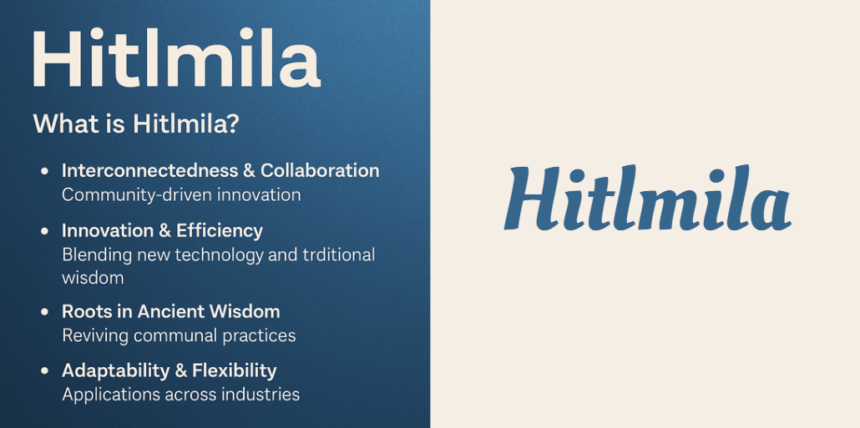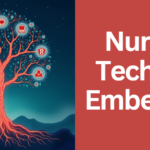In today’s dynamic, technology-driven world, the term Hitlmila is emerging as a revolutionary framework that fuses ancient wisdom with modern innovation. This guide offers a comprehensive, easy-to-read exploration into the many facets of Hitlmila.
It delves into its historical roots, defines its modern applications, and provides actionable steps and tools to help individuals and organizations harness its power for enhanced collaboration, creativity, and efficiency.
The Origins and Historical Context of Hitlmila
Etymology and Cultural Roots
The word Hitlmila is believed to stem from a blend of ancient dialects, combining elements from Sanskrit—where “hit” denotes benefit—and Swahili, with “mila” referring to traditions or customs. In historical contexts, communities used similar expressions during communal rituals aimed at achieving harmony and shared well-being.
Ancient manuscripts from various cultures reveal that such practices were designed to bring people together, fostering unity and cooperation.
Early Mentions and Historical Practices
Historical texts from regions in Southeast Asia and beyond mention gatherings where these principles were in action. People met not only to celebrate but also to establish a sense of community through structured discussion, shared storytelling, and collective problem-solving.
Over time, these practices evolved, influencing modern approaches that emphasize collaboration and reflective group discussions.
Evolution Over Time
From ancient rituals to today’s innovative practices, Hitlmila has transformed remarkably. Early adopters in rural communities practiced foundational techniques of collaboration, which have now been enhanced by technology.
These practices have grown from spontaneous communal events into structured systems that drive personal and organizational growth in our digital era.
Defining Hitlmila in the Modern World
Core Principles and Pillars
In its modern form, Hitlmila is defined by three core principles: connection, reflection, and adaptation.
- Connection:
Hitlmila is all about building meaningful relationships, whether among team members in a corporation or within community groups. It encourages individuals to engage in authentic dialogue and form bonds that nurture both personal and collective success. - Reflection:
Regular self-assessment and group reflection are key tenets. By taking time to reflect on goals and challenges, practitioners align their actions with personal values, ensuring continuous improvement. - Adaptation:
The ever-changing landscape of technology and social norms demands flexibility. Hitlmila advocates for an adaptable mindset, one that embraces new ideas and rapidly adjusts to meet emerging needs.
How Hitlmila Differs from Similar Concepts
Unlike mindfulness, which primarily focuses on individual self-awareness, or agile and lean methodologies that target operational efficiency, Hitlmila integrates both personal growth and collective advancement.
It is a synthesis of various approaches designed to promote a balanced improvement across all areas of life—from professional settings to community interactions.
The Role in Shaping Digital and Social Narratives
In the digital age, Hitlmila has begun to shape how we communicate and collaborate online. It prompts a paradigm shift toward more authentic and engaged interactions on social media, digital platforms, and in organizational cultures.
Key Features and Characteristics of Hitlmila
Hitlmila is characterized by several unique features that set it apart:
- Interconnectedness and Collaboration:
The framework emphasizes a networked approach where breaking down traditional silos leads to more effective teamwork. This principle is essential for both small teams and large organizations. - Technology Integration and Data-Driven Practices:
Modern applications of Hitlmila harness technology such as machine learning, cloud computing, and real-time data analytics. These tools help streamline processes and drive decision-making. - Personal and Collective Transformation:
Adopting Hitlmila can result in noticeable improvements in personal creativity and emotional resilience, while also enhancing group dynamics and innovation in work settings. - Flexibility and Adaptability:
Whether applied to personal routines or corporate strategies, Hitlmila shows remarkable adaptability, evolving with new trends and technological advancements.
Below is an example table that summarizes these features:
| Feature | Description | Impact |
|---|---|---|
| Interconnectedness | Encourages teamwork and open communication | Enhances collaboration |
| Technology Integration | Uses cutting-edge tools for efficiency | Drives innovation |
| Personal Transformation | Promotes self-awareness and continuous improvement | Boosts personal growth |
| Adaptability | Embraces change and flexible problem-solving | Ensures long-term relevance |
Applications of Hitlmila Across Industries
In Business and Corporate Settings
Modern corporations are increasingly adopting Hitlmila practices to improve team collaboration and operational efficiency. By integrating Hitlmila into their corporate strategy, companies see measurable benefits.
For example, teams that practice regular reflective sessions report enhanced productivity and innovation. Moreover, by fostering a culture of open communication, these organizations experience elevated employee morale and customer engagement.
In Technology and Digital Transformation
For technology companies, Hitlmila is a catalyst for leveraging data-driven decisions. It stimulates the integration of new software tools that facilitate real-time analysis and predictive insights.
Case studies have shown that businesses implementing Hitlmila methodologies enjoy faster product development cycles and better customer insights, which ultimately lead to more agile decision-making processes.
In Healthcare, Education and Community Building
The healthcare sector benefits from Hitlmila through better collaboration among medical professionals, leading to improved patient care. In education, schools are incorporating Hitlmila principles in their curriculum to foster teamwork and holistic learning.
Community projects, too, have utilized Hitlmila to organize collective actions that result in societal benefits, such as reduced social isolation and increased civic participation.
In Creative Industries and Entertainment
Artists, designers, and digital content creators harness Hitlmila to spark groundbreaking ideas. The mix of collaborative brainstorming and innovative thinking enables creators to produce work that resonates with audiences and pushes the boundaries of traditional media.
Benefits of Embracing Hitlmila
For Individuals
Adopting Hitlmila on a personal level encourages increased creativity and critical self-reflection. This can lead to:
- Greater personal growth, as one constantly evaluates and adjusts life goals.
- Enhanced emotional resilience through regular community support and shared experiences.
For Organizations
When applied in a corporate setting, Hitlmila can transform an organization by:
- Streamlining workflows, which results in cost savings and greater operational efficiency.
- Strengthening customer relationships by fostering genuine engagement and trust.
- Promoting a culture of continuous improvement and collective problem-solving.
Societal and Community-Level Advantages
Communities practicing Hitlmila report more harmonious interpersonal relationships and better conflict resolution. This effect can lead to lower crime rates and higher civic participation, as groups work together towards common goals.
Challenges and Considerations When Implementing Hitlmila
Despite its many benefits, implementing Hitlmila practices is not without challenges. Resistance to change is common in organizations where traditional methods are deeply entrenched. Balancing innovative techniques with time-honored practices can also be difficult. Companies must navigate these hurdles by:
- Providing thorough change management support.
- Ensuring data privacy and ethical use of technology.
- Addressing misinterpretations and dispelling common myths that may arise.
How to Incorporate Hitlmila into Daily Life and Business
A Step-by-Step Guide
For those ready to embark on their Hitlmila journey, start by assessing your current processes—whether in a personal routine or within a business environment. Then, create a roadmap that outlines actionable steps for improvement. Here’s a concise breakdown:
- Assess Current Processes:
Evaluate existing workflows and identify bottlenecks or areas for enhancement. - Develop a Roadmap:
Create a comprehensive plan that includes goals, timelines, and milestones. - Invest in Tools and Resources:
Research and select technology solutions, apps, and educational resources that align with Hitlmila principles. - Implement Incrementally:
Introduce changes gradually, monitor progress, and adjust strategies as needed. - Review and Optimize:
Establish regular review sessions to assess performance, celebrate successes, and refine approaches.
Recommended Resources
To master Hitlmila, consider exploring:
- Books and Articles:
Read in-depth analyses and case studies that provide practical insights. - Digital Tools and Apps:
Use platforms designed for team collaboration, productivity tracking, and reflective practices. - Workshops and Courses:
Enroll in programs that offer guided training on implementing Hitlmila strategies.
The Future of Hitlmila
Looking forward, experts predict that Hitlmila will continue to gain traction across various sectors. Emerging trends suggest that:
- Artificial intelligence and machine learning will further enhance Hitlmila practices by offering predictive insights and automating routine tasks.
- More small and medium-sized enterprises will adopt Hitlmila methods as technology becomes more accessible.
- Global challenges such as climate change and social polarization could be mitigated through the collaborative, community-driven aspects of Hitlmila.
Frequently Asked Questions
1: What industries have proven to be the most adaptable when integrating the principles of Hitlmila?
Recent real-world implementations indicate that technology startups, creative agencies, and community-based organizations are among the sectors that have embraced Hitlmila most dynamically. For instance, tech companies are using its framework to foster agile development and cross-functional teamwork, while creative teams are finding that the emphasis on shared vision can lead to breakthrough innovations in design and media production.
2: How does technology specifically enhance the practical application of Hitlmila principles?
Modern technology platforms play an essential role in operationalizing Hitlmila by facilitating real-time communication, data analytics, and automated feedback loops. Digital collaboration tools, such as cloud-based project management systems and virtual meeting solutions, help maintain a continuous dialogue among team members, ensuring that adaptations and process improvements are quickly implemented and refined over time.
3: Are there measurable metrics or case studies that demonstrate the successful impact of Hitlmila?
Yes, several organizations have reported improvements in productivity, creativity, and customer satisfaction after implementing Hitlmila-inspired approaches. Independent case studies have shown that companies using these practices have experienced measurable performance gains—such as accelerated product development cycles and enhanced team collaboration—which reinforce its strategic value in both startup environments and established enterprises.
4: What potential risks or challenges should organizations consider before adopting Hitlmila strategies?
While Hitlmila offers significant benefits, organizations need to be mindful of potential challenges such as over-reliance on digital tools, misalignment between team members during the transition phase, and resistance to cultural change. It is crucial to ensure that the shift does not compromise critical personal interactions and that the new processes are carefully integrated into existing workflows without overwhelming staff.
5: Can existing business methodologies be complemented by Hitlmila, and if so, how?
Absolutely. Hitlmila is designed to be a complementary framework that enhances traditional business strategies rather than replacing them. By integrating its principles with methodologies like Agile, Lean, or Six Sigma, organizations can infuse a higher level of collaboration and continuous improvement into their processes. This hybrid approach often results in a more adaptable organization that is better positioned to tackle fast-changing market dynamics.
Conclusion
In summary, Hitlmila is emerging as an integrative and transformative framework that blends ancient communal practices with modern technological tools. Whether you are seeking personal growth, aiming to boost your company’s productivity, or striving to create stronger community bonds, the principles of Hitlmila offer a roadmap toward achieving lasting improvement and innovation.
This comprehensive guide has explored the origins, core principles, applications, benefits, and challenges associated with Hitlmila. With its emphasis on connection, reflection, and adaptability, Hitlmila is poised to redefine how we approach work, relationships, and self-improvement in our increasingly digital world.
Now is the time to embark on your Hitlmila journey—embrace its principles, integrate them into your daily life, and join a global movement toward a more connected, compassionate future.
Recommended Articles
Ultimate Guide to Nito’s Lazy Foreign World Syndrome Chapter 36 Rawkuma
The Ultimate Comprehensive Guide to h5joy: Mastering Online Gaming and Digital Tools
Chef Gotxen Godolix: The Ultimate Culinary Innovator Redefining Modern Gastronomy
Etruesports iOS App – The Ultimate Guide for Sports & Esports Fans





